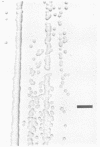Abstract
Sixteen Neisseria gonorrhoeae strains were examined for their abilities to grow under reduced oxygen tension. Low oxygen tensions were developed by evacuation-replacement procedures in which anaerobes and oxidation-reduction indicators were used as controls. All strains survived 96 h in a medium reduced to below -125 mV without visible growth. Detectable growth occurred at 0.05% oxygen, and 33% of normal colony size under air (21% oxygen) was obtained at 0.15% oxygen. Population selection did not determine survival and growth, but carbon dioxide was required. Characteristic colony morphologies were not evident at the lower oxygen concentrations. Colonial variation was not influenced during survival under anaerobic conditions or growth under low oxygen levels (0.15%). Medium differences were not significant affectors. We concluded that N. gonorrhoeae will grow under tensions suitable for anaerobes, and will demonstrate certain modifications of behavior under these conditions.
Full text
PDF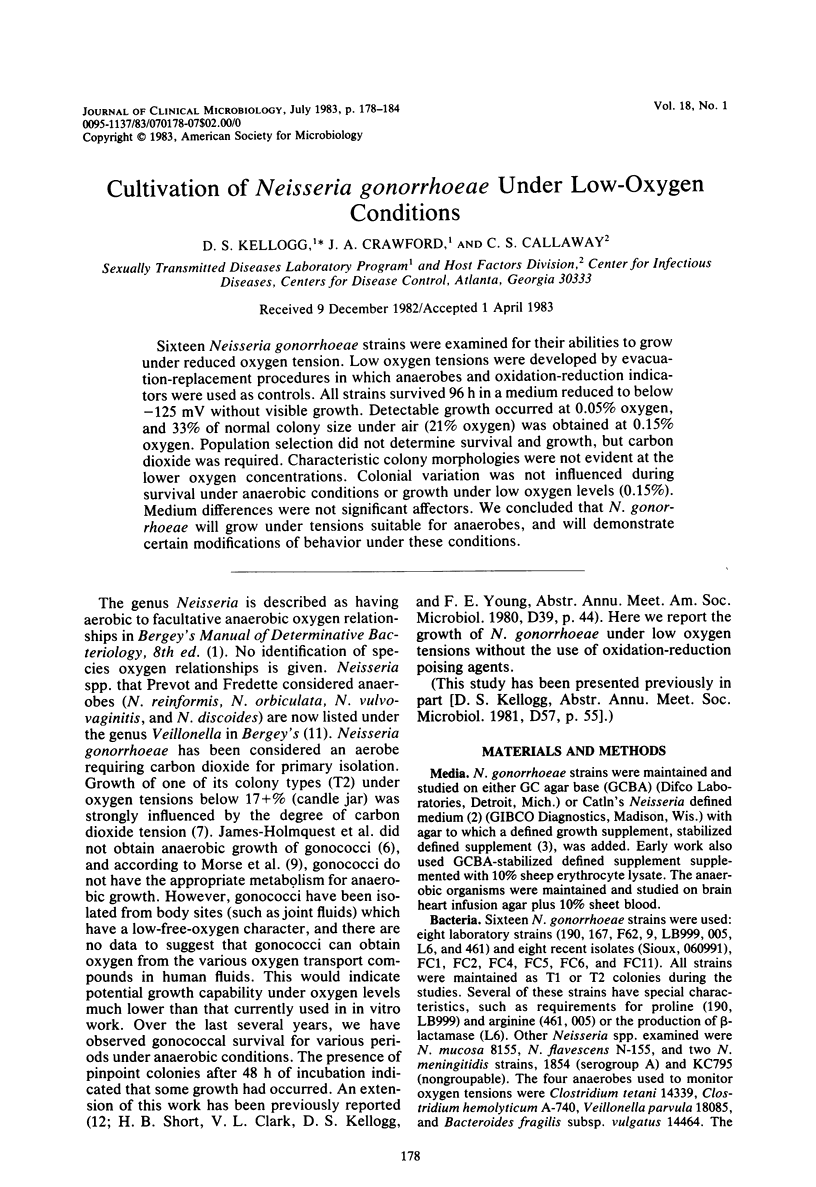
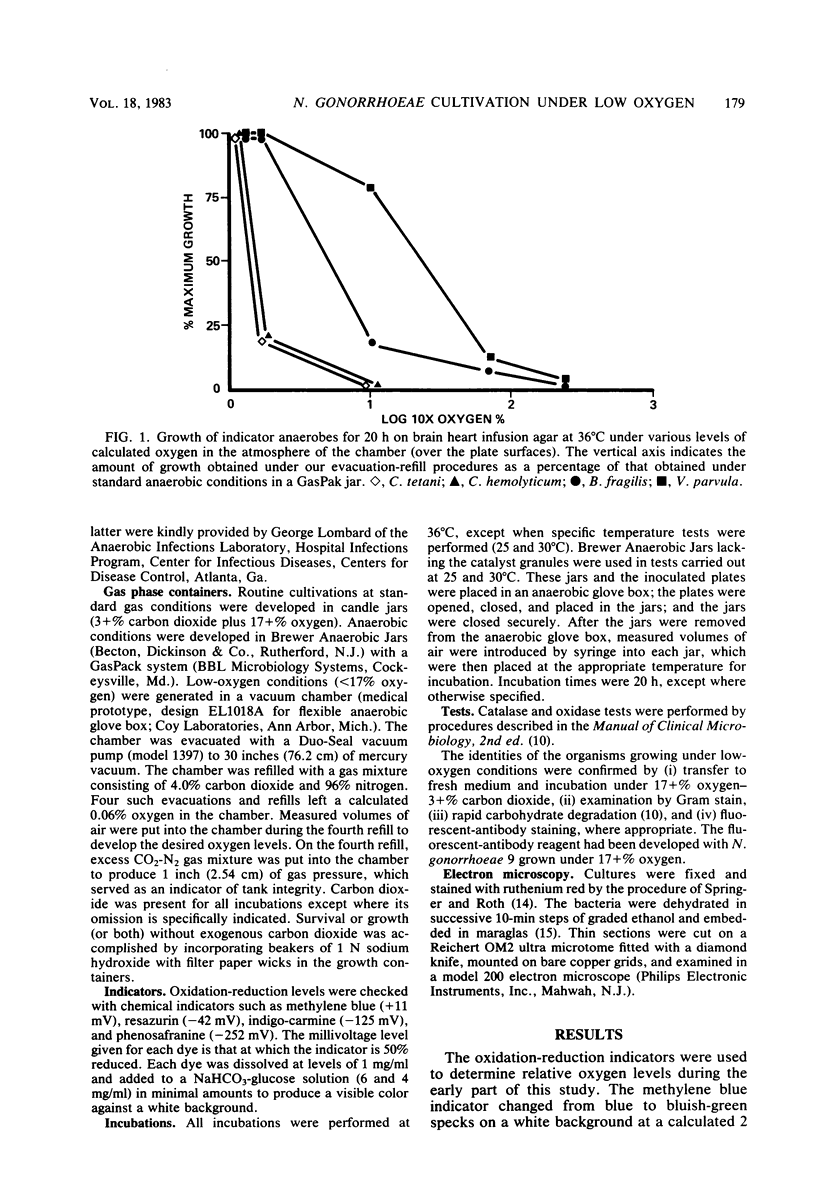
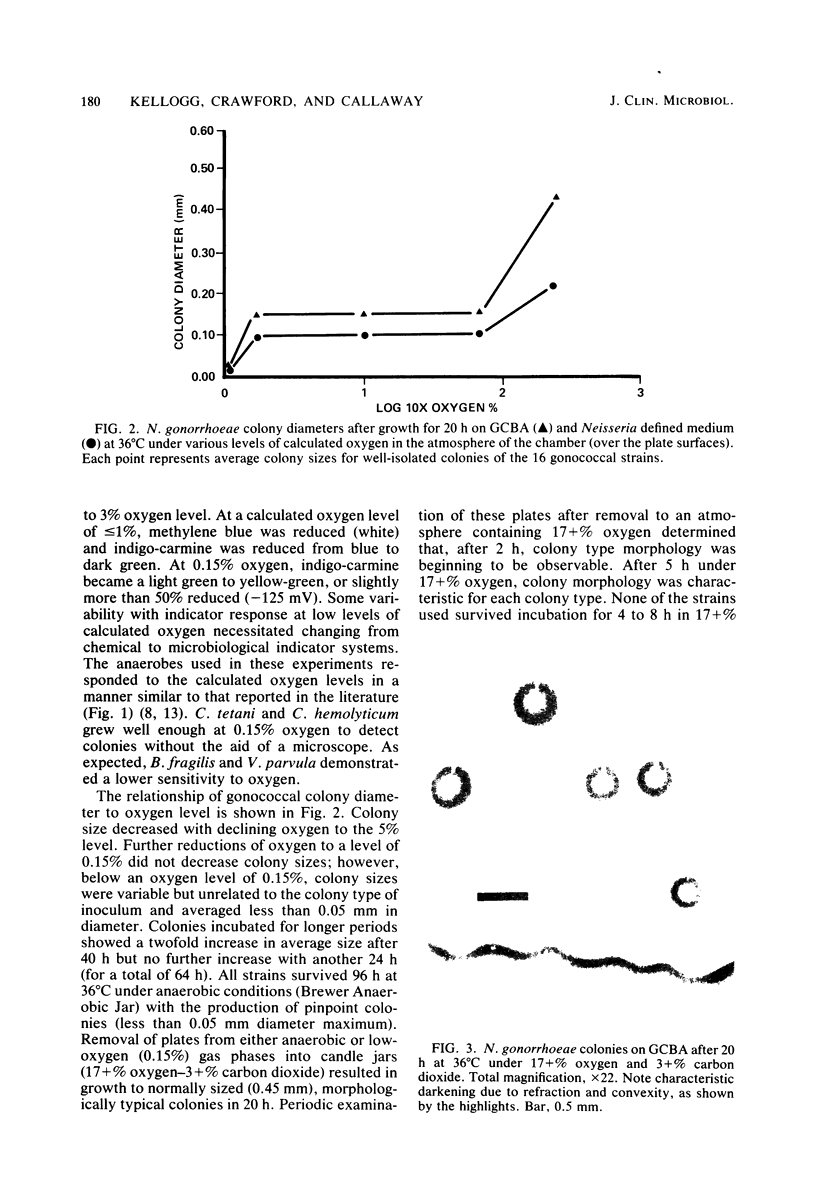


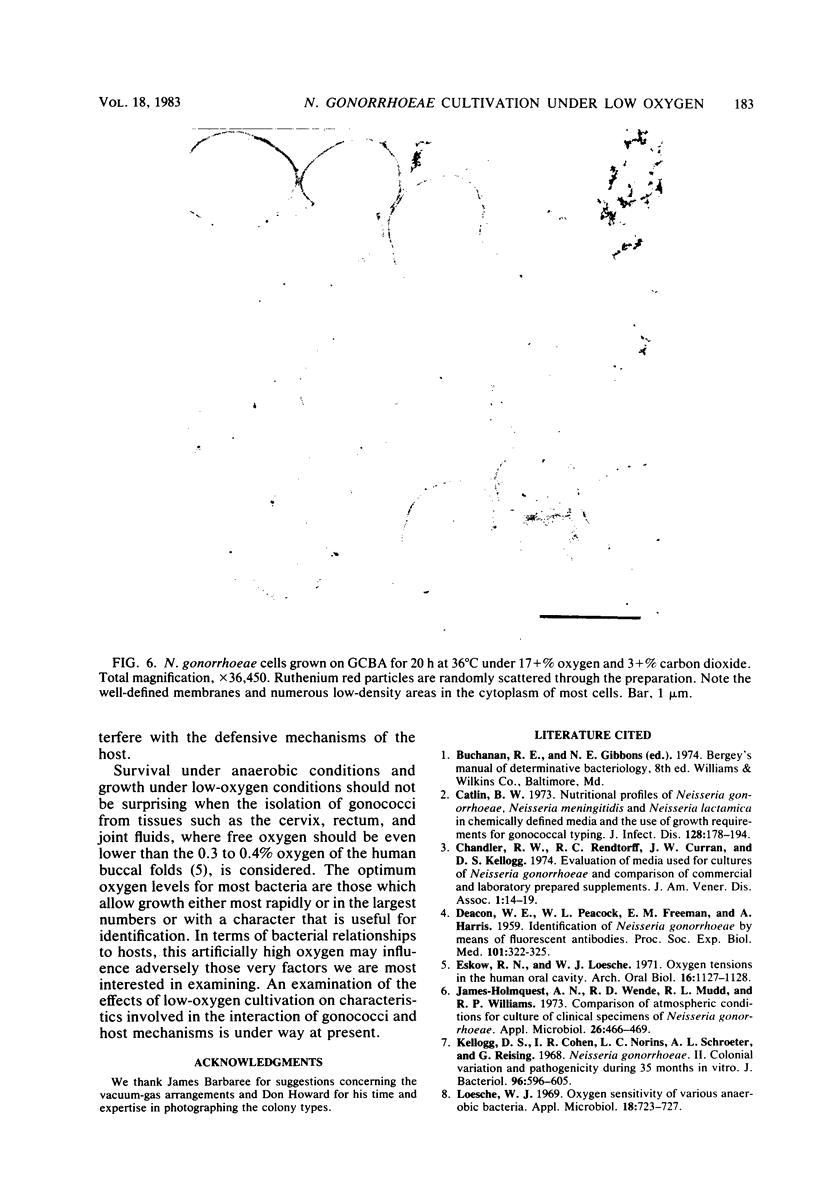

Images in this article
Selected References
These references are in PubMed. This may not be the complete list of references from this article.
- Catlin B. W. Nutritional profiles of Neisseria gonorrhoeae, Neisseria meningitidis, and Neisseria lactamica in chemically defined media and the use of growth requirements for gonococcal typing. J Infect Dis. 1973 Aug;128(2):178–194. doi: 10.1093/infdis/128.2.178. [DOI] [PubMed] [Google Scholar]
- Chandler R. W., Rendtorff R. C., Curran J. W., Kellogg D. S., Jr Evaluation of media used for cultures of Neisseria gonorrhoeae and comparison of commercial and laboratory prepared supplements. J Am Vener Dis Assoc. 1974 Sep;1(1):14–19. [PubMed] [Google Scholar]
- DEACON W. E., PEACOCK W. L., Jr, FREEMAN E. M., HARRIS A. Identification of Neisseria gonorrhoeae by means of fluorescent antibodies. Proc Soc Exp Biol Med. 1959 Jun;101(2):322–325. doi: 10.3181/00379727-101-24925. [DOI] [PubMed] [Google Scholar]
- Eskow R. N., Loesche W. J. Oxygen tensions in the human oral cavity. Arch Oral Biol. 1971 Sep;16(9):1127–1128. doi: 10.1016/0003-9969(71)90218-4. [DOI] [PubMed] [Google Scholar]
- James-Holmquest A. N., Wende R. D., Mudd R. L., Williams R. P. Comparison of atmospheric conditions for culture of clinical specimens of Neisseria gonorrhoeae. Appl Microbiol. 1973 Oct;26(4):466–469. doi: 10.1128/am.26.4.466-469.1973. [DOI] [PMC free article] [PubMed] [Google Scholar]
- Kellogg D. S., Jr, Cohen I. R., Norins L. C., Schroeter A. L., Reising G. Neisseria gonorrhoeae. II. Colonial variation and pathogenicity during 35 months in vitro. J Bacteriol. 1968 Sep;96(3):596–605. doi: 10.1128/jb.96.3.596-605.1968. [DOI] [PMC free article] [PubMed] [Google Scholar]
- Loesche W. J. Oxygen sensitivity of various anaerobic bacteria. Appl Microbiol. 1969 Nov;18(5):723–727. doi: 10.1128/am.18.5.723-727.1969. [DOI] [PMC free article] [PubMed] [Google Scholar]
- Short H. B., Clark V. L., Kellogg D. S., Jr, Young F. E. Anaerobic survival of clinical isolates and laboratory strains of Neisseria gonorrhoea: use in transfer and storage. J Clin Microbiol. 1982 May;15(5):915–919. doi: 10.1128/jcm.15.5.915-919.1982. [DOI] [PMC free article] [PubMed] [Google Scholar]
- Springer E. L., Roth I. L. The ultrastructure of the capsules of Diplococcus pneumoniae and Klebsiella pneumoniae stained with ruthenium red. J Gen Microbiol. 1973 Jan;74(1):21–31. doi: 10.1099/00221287-74-1-21. [DOI] [PubMed] [Google Scholar]




